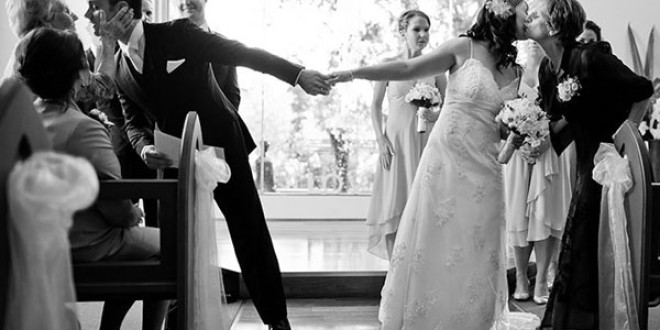[ad_1]
Greek weddings feature a combination of ceremonies representing an unforgettable part of Greek culture. The Greek wedding ceremony is heavily immersed in tradition, joy, excitement, and profound symbolism. The Greeks believe a lot in traditions and superstitions, and these phenomena are flamboyantly showcased on the occasions of engagement and wedding.
History
According to Greek mythology, Cecrops, the legendary ruler of Athens, who was half-human and half snake, established the institution of marriage in Greece. Before his reign the Athenians lived promiscuously. The storming motives for marriage were the political coalition between the royal families that marriage would demonstrate and creation of children for next generation.
Pre-engagement
In Greek society, engagement is a cause of great celebration. The potential husband will visit the bride’s father and ask for his daughter’s hand in marriage. Upon the approval of bride-to-be’s family, the date of engagement is fixed. The relatives and close friends of both the families are invited to attend the engagement.
Engagement
Traditionally, the couple gets engaged by exchanging rings in the presence of family and close friends. The priest blesses the engagement rings for the couple. The bride and the groom then place the blessed rings on the left ring fingers. The guests present wish them many blessings.
This is followed by a large feast. The engagement is believed to be as binding as wedding. According to Greek Orthodoxy, it is mandatory for the newly engaged couple to visit the priest thrice before he will give his consent to perform the marriage ceremony. The couples are forbidden to perform wedding during certain days of the year. This includes the first half of August, forty days prior to Ester and forty days prior to Christmas. The Greek Orthodox Church considers these dates to be unsuited.
Pre-wedding Ceremonies
After the engagement, the first thing done is to pick the Koumbaros. He is the witness to the marriage ceremony and has many spiritual and financial responsibilities. It is important for Koumbaros to be a man in good standing of the Greek Orthodoxy.
Greek weddings usually take place on Sunday. On the Wednesday before wedding, the ritual of ‘Starting the Leaven’ takes places. The couple sieves flour and relatives observe this in silence. Once there is enough flour, all the guests throw coins into the sieve and wish the bride and groom good luck. On Friday before the wedding, there is another ceremony ‘Filling the Sack.’ It’s an occasion when the bride fills in the sacks all her possessions and the guests throw coins into them. Bride’s mother is the first one to place the collections she had piled up over the years into her daughter’s sacks. In the meantime, the groom meets his friends and relatives, offers them drinks and formal invitation to attend the wedding feast.
The household goods given by girl’s mother are used, in a custom called Nyphostoli, by local woman volunteers to furnish the first home of newlyweds.
The Wedding Ceremony
The commencement of wedding procession takes place at the groom’s house where the wedding flag is raised. The flag-bearer leads the priest, the groom and the guests to the bride’s home. The bride’s mother offers him wine, and when he has drunk it, the Koumbaro leads the wedding party to the Church.
The bride wears red veils that symbolizes fire in order to protect her from evil. She also has a lump of sugar with her that ensures a sweet future.
Betrothal ceremony begins with the priest blessing the rings and reciting Bible passages. Then the Koumbaro exchanges the rings three times between the couple’s fingers. It signifies that the weaknesses of one shall be compensated by the other. The bride and groom are given a pair of lit candles which symbolize the eternal light of Jesus Christ.
Crowing is the most iconic part of the Greek wedding. The priest takes two crowns or Stefana and adorns the couple by placing them on their heads. Koumbaro then invites the couple to take their first step together by walking three times around the altar upon which rest the Holy Bible and cross.
At the end of the ceremony, the priest offers his blessings to the newly married couple. The couple then goes to the groom’s house where the flag is raised again and the bride throws on the roof a small piece of iron as a symbol of strength of her new life. Traditionally, the bride’s parents plan and pay for the reception.
Attire
The Greek wedding attire is traditional, the bride is usually in a white gown with long train and a traditional black suit with a bow tie for the groom. The Greek wedding dresses are an image of elegance, simplicity and high class. These dresses can easily be identified by the unique cut of the wedding gown that preserves the femininity of a woman.
[ad_2]
Source by Abhinav GL

